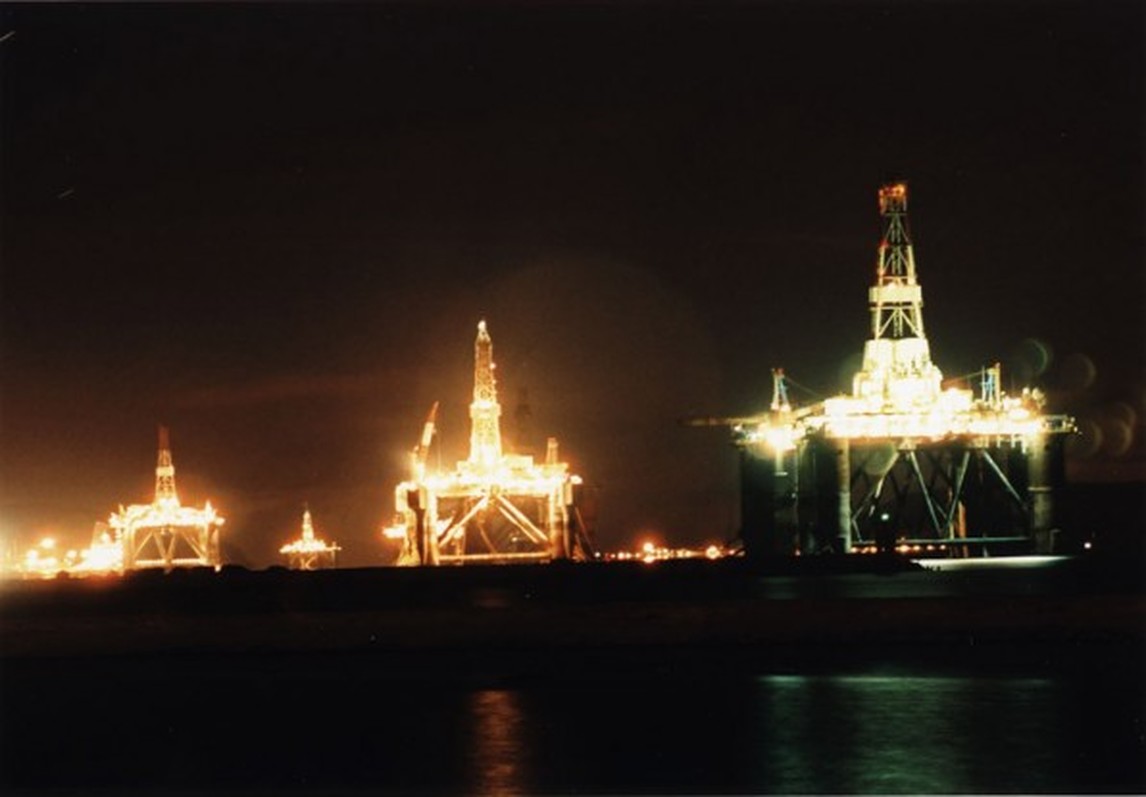Emily Richardson
Petrolia
2005
3 screen, 16mm film transferred to HD, 7 minutes 50 seconds
Petrolia (2005) takes its name from a redundant oil drilling platform sat in the Cromarty Firth, Scotland. The film looks at the architecture of the oil industry along the Scottish coastline where oil and gas supplies are predicted to run dry in the next forty years. Shooting on 16mm film [an old-fashioned film, often associated with low budget or industrial films], using time lapse and long exposure techniques, the film presents a record of industrial phenomena - the toxic beauty of the refinery at Grangemouth, huge drilling platforms gliding across the water as they come in for maintenance and repair at Nigg and the last dance.
ABOUT THE ARTIST
Emily Richardson is a UK based artist filmmaker who creates film portraits of particular places. her work focuses on sites in transition and covers an extraordinarily diverse range of landscapes including empty East End streets, forests, North Sea oil fields, post-war tower blocks, empty cinemas and Cold War military facilities.
Richardson’s films have been shown in galleries, museums and festivals internationally including Tulca 2012, Ireland; Chisenhale Gallery, London; Firstsite, Colchester; Maison Europeenne de la Photographie, Paris; Botkyrka Konsthall Sweden; The Wapping Project, London; Artprojx Cinema at the Armory Show, New York; FACT Liverpool; Tate Modern and Tate Britain, London; Danielle Arnaud, London; Wurttembergischer Kunstverein, Stuttgart; Uppsala Museum, Sweden and Venice, Edinburgh, London, Rotterdam and New York Film Festivals.She was awarded the Gilles Dusein Prize, Paris 2009 in recognition of her films. Her work is distributed by LUX, London.
2005
3 screen, 16mm film transferred to HD, 7 minutes 50 seconds
Petrolia (2005) takes its name from a redundant oil drilling platform sat in the Cromarty Firth, Scotland. The film looks at the architecture of the oil industry along the Scottish coastline where oil and gas supplies are predicted to run dry in the next forty years. Shooting on 16mm film [an old-fashioned film, often associated with low budget or industrial films], using time lapse and long exposure techniques, the film presents a record of industrial phenomena - the toxic beauty of the refinery at Grangemouth, huge drilling platforms gliding across the water as they come in for maintenance and repair at Nigg and the last dance.
ABOUT THE ARTIST
Emily Richardson is a UK based artist filmmaker who creates film portraits of particular places. her work focuses on sites in transition and covers an extraordinarily diverse range of landscapes including empty East End streets, forests, North Sea oil fields, post-war tower blocks, empty cinemas and Cold War military facilities.
Richardson’s films have been shown in galleries, museums and festivals internationally including Tulca 2012, Ireland; Chisenhale Gallery, London; Firstsite, Colchester; Maison Europeenne de la Photographie, Paris; Botkyrka Konsthall Sweden; The Wapping Project, London; Artprojx Cinema at the Armory Show, New York; FACT Liverpool; Tate Modern and Tate Britain, London; Danielle Arnaud, London; Wurttembergischer Kunstverein, Stuttgart; Uppsala Museum, Sweden and Venice, Edinburgh, London, Rotterdam and New York Film Festivals.She was awarded the Gilles Dusein Prize, Paris 2009 in recognition of her films. Her work is distributed by LUX, London.

